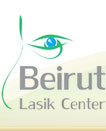Vision Correction
Eye Glasses
Eyeglasses are the most commonly used form of vision correction. Consisting of a frame that holds two pieces of glass or plastic they are meant to correct refractive errors such as myopia, hyperopia and astigmatism. Eyeglasses add or substracts focusing power to the eye's cornea and lens.
Advantages: suitable for people that suffer from allergies when using contact lenses, they offer eye protection in work environment.
Disadvantages: limit activities, obstruct your view, need constant cleaning and affect your appearance.
Contact Lenses
Contact lenses are therapeutic or corrective lenses that are placed on the cornea of the eye. They can be used to correct vision disorders such as myopia, hyperopia and stigmatism or to protect injured or diseased cornea from constant rubbing of blinking lids allowing it to heal.
Advantages: more natural vision compared to eyeglasses, no annoying reflections, do not constraint your movement, and do not affect your appearance.
Disadvantages: quality lenses are expensive, require special care, can cause damage to the eye without good care, and can cause allergies.
Phakic Intraocular Lenses
Phakic intraocular lenses are new devices that are used to correct Myopia. These thin lenses are implanted directly into the eye between the cornea and the iris or just behind the iris so you no longer need to wear glasses or contact lenses anymore.
Advantages: Requires no maintenance, you cannot feel it in your eye.
Disadvantages: Complications are rare but they can occur after implantation.
Laser Vision Correction – LASIK
Lasik is a type of refractive surgery that can correct refractive vision disorders such as Myopia, Hyperopia and Astigmatism. Lasik surgery uses a cold beam of light to reshape the cornea of the eye.
Advantages: accurate correction, procedure is fast and painless. No stitches or bandages.
Disadvantages: changes made to the structure of the cornea are irreversible, increased susceptibility to dry eyes, increased light sensitivity after undergoing the surgery.
Cataract Surgery
The cataract surgery consists of removing the natural lens of the eye (the crystalline) when it has undergone opacification. An artificial intraocular lens is then inserted to replace the crystalline.
Advantages: Restores transparency of the eye lens and normal vision. Requires no maintenance, you cannot feel it in your eye.
Disadvantages: Complications are rare but they can occur after implantation.
Presbyopia Treatment
Presbyopia is a condition when the crystalline (the eye's lens) loses its ability to focus. Patients with Presbyopia have difficulty seeing close objects. Multifocal Lens Implant is a good treatment option for this condition. This type of lenses behaves similarly to eyeglasses that have multifocal glasses: they have zones for close, intermediate and far distance modes of viewing. ReStor, ReZoom and Acri.LISA are commonly used examples of these lenses.
Advantages: Ability to see normally objects that are at a close, intermediate or far distance. Requires no maintenance, you cannot feel it in your eye.
Disadvantages: Complications are rare but they can occur after implantation.
Keratoconus Treatment
Keratoconus is a condition in which the structure of the cornea is changed causing it to become thin and deformed. It gains a conical shape instead of the gradual curvy surface. This condition can be treated by 2 major treatments: Corneal collagen cross linking and Intracorneal Ring Segment. Most of the times, both treatments are combined to obtain better results.
Corneal collagen cross linking
The cornea consists of numerous layers of collagen that are arranged in certain pattern. The collagen fibers of each layer are linked to neighboring fibers of other layers which gives strength to the cornea. In keratoconus, these links are much fewer than normally. The role of corneal collagen cross linking is to increase these bonds which make the cornea stronger.
Intracorneal Ring Segment
Clear small semi-circular rings made of bio-compatible plastic are placed in the cornea helping the central part of the cornea to flatten and reshape the curvature of its outer layer. Specific brands of these rings include: Intacs, Kerarings and Ferrara.
Advantages: Low Risk treatments.
Disadvantages: Require Follow-ups.




